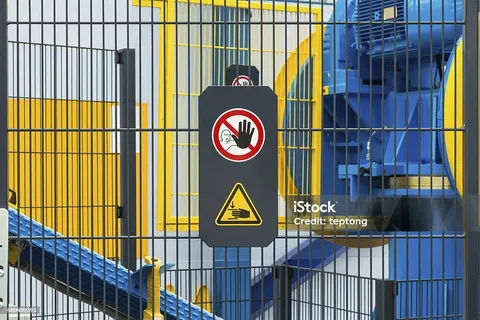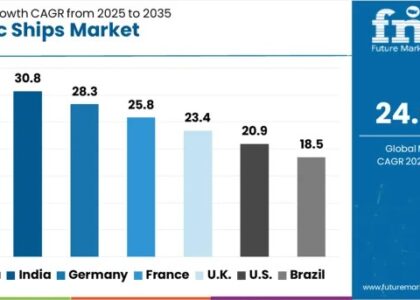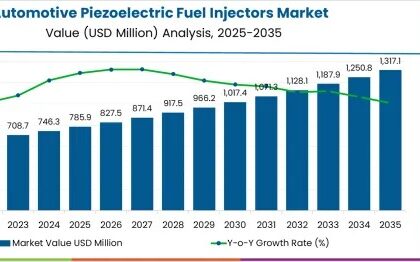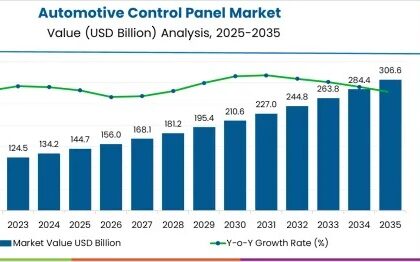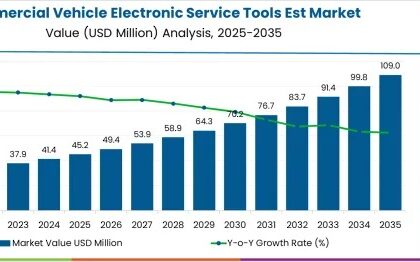The global machine safety market is set to observe USD 6.1 billion in 2025. The industry is poised to depict 6.7% CAGR from 2025 to 2035, reaching USD 11.2 billion by 2035.
Machine safety deals with the safety system for machines that protect workers, machinery, and industrial processes from failure or accident. It includes safety interlocks, safety sensors, and safety. Additionally, the products include safety interlocks, sensors, and emergency stops, including artificial intelligence-based machine safety systems that ensure compliance with strict workplace safety regulations.
In a world increasingly driven by industrial automation and digitized manufacturing, machine safety has emerged as a cornerstone of responsible innovation. As factories become smarter, faster, and more interconnected, the machine safety market is evolving to ensure that productivity never comes at the cost of human well-being.
No longer limited to emergency stop buttons and mechanical guards, modern machine safety solutions now integrate seamlessly into automated systems, combining hardware, software, and real-time intelligence to create secure and adaptive industrial environments.
Get Ahead with Our Report: Request Your Sample Now!
https://www.futuremarketinsights.com/reports/sample/rep-gb-650
Beyond Compliance: Safety as a Strategic Advantage
Traditionally, machine safety systems were adopted primarily to meet regulatory requirements and avoid liability. Today, they are recognized as strategic enablers of operational efficiency, workforce protection, and brand integrity. Companies that invest in safety see fewer disruptions, lower insurance costs, and higher employee morale—benefits that extend beyond the factory floor.
Modern safety systems are now designed to maximize uptime without compromising protection, offering dynamic responses based on context, machine behavior, and human proximity.
A Technological Shift Toward Intelligent Safety
The machine safety landscape has expanded significantly with the integration of smart technologies. Key components now include:
-
Safety Sensors and Switches: Detect presence, position, or intrusion around hazardous areas.
-
Safety Light Curtains and Laser Scanners: Enable perimeter guarding without physical barriers, ensuring flexibility and visibility.
-
Emergency Stop Devices and Interlocks: Provide immediate intervention capabilities in case of danger.
-
Safety PLCs and Controllers: Analyze safety input data in real time, enabling intelligent decisions and system-level coordination.
These systems now often communicate via industrial Ethernet protocols and can be monitored remotely through cloud-based dashboards—enabling predictive maintenance and real-time compliance tracking.
Collaboration Between Humans and Machines
With the growing adoption of collaborative robots (cobots) and human-machine interfaces, machine safety is being redefined to support safe interaction rather than complete separation. Safety systems are evolving to become adaptive and contextual, allowing machines to slow down, stop, or change behavior when a human enters a predefined zone.
Advanced vision systems and AI-based motion analysis are now being used to predict potential hazards before they occur, shifting the focus from reactive safety to proactive prevention.
Industry 4.0 and the Role of Data in Safety
The rise of Industry 4.0 is transforming machine safety from a mechanical safeguard to a data-driven discipline. Connected sensors and safety modules feed information into larger control and analytics platforms, enabling:
-
Predictive Safety Analytics: Identifying patterns that may indicate wear, misuse, or potential failure.
-
Digital Twin Integration: Simulating safety scenarios and validating protection strategies in a virtual environment.
-
Remote Safety Audits: Reducing downtime and travel by enabling compliance checks via cloud-based systems.
This data-centric approach allows for smarter decision-making, faster incident response, and better alignment with evolving compliance standards.
Applications Across Sectors and Scales
Machine safety solutions are deployed across a wide range of industries—from automotive and food processing to packaging, pharmaceuticals, and logistics. Each sector presents unique risks, whether it’s high-speed conveyors, robotic arms, or pressurized systems.
Small and medium-sized enterprises are increasingly adopting modular, plug-and-play safety solutions that are cost-effective and scalable. Meanwhile, large-scale manufacturers are investing in integrated safety systems that span entire production lines and facilities.
Challenges in Complexity, Integration, and Workforce Training
Despite advancements, implementing effective machine safety systems comes with challenges. Integrating new safety technologies into existing equipment can be complex and costly, particularly in legacy manufacturing environments. Ensuring system compatibility across multiple OEMs and platforms adds further difficulty.
Moreover, training and awareness remain critical. Even the most advanced safety systems rely on skilled operators and maintenance personnel who understand how to use them effectively and respond to safety alerts appropriately.
Exhaustive Market Report: A Complete Study
https://www.futuremarketinsights.com/reports/machine-safety-market
Global Standards and Regulatory Momentum
Safety standards such as ISO 13849, IEC 62061, and regional directives (e.g., OSHA, CE, and ANSI standards) continue to evolve to address new risks introduced by automation and connectivity. Manufacturers must stay ahead of these changes to remain compliant and competitive in the global market.
Governments and industry bodies are also increasing enforcement and awareness around machine safety, recognizing its role in preventing accidents, reducing medical costs, and promoting sustainable industrial development.
The Future: Autonomous Safety and AI-Powered Monitoring
Looking ahead, the machine safety market is moving toward autonomous safety systems—capable of detecting, analyzing, and responding to hazards without human input. Artificial intelligence and machine learning will further enhance risk prediction, enabling systems to learn from near misses and optimize safety protocols over time.
Integration with cybersecurity will also become essential, as connected safety systems must be protected from digital threats that could compromise physical safety.
Safety as a Foundation for Industrial Innovation
As industries embrace the next wave of automation, machine safety will remain a foundational element—balancing innovation with responsibility. In the smart factory of the future, safety systems will not be barriers, but enablers—helping machines, people, and data work in harmony.
With intelligent technologies, adaptive controls, and a growing emphasis on human-centric design, the machine safety market is not just protecting productivity—it’s making it smarter, stronger, and safer.


